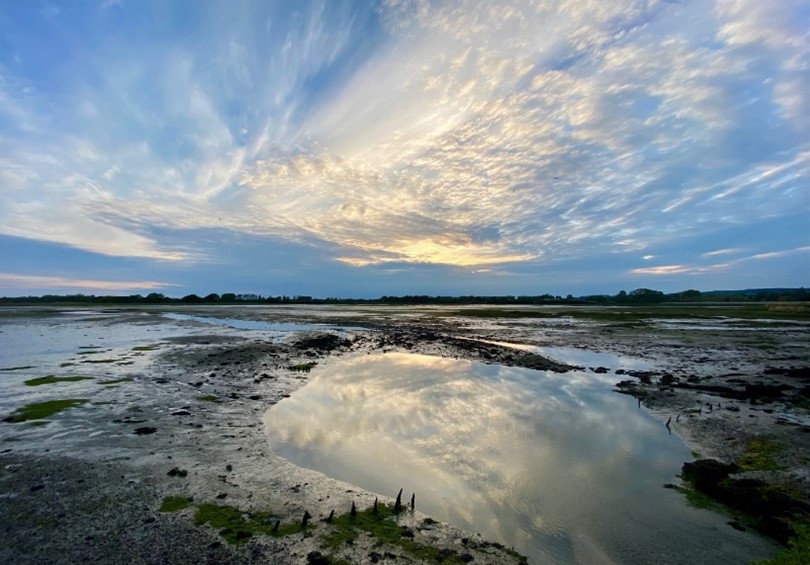Mudflats can be seen in the ‘intertidal’ area, covered by the sea at high tide and uncovered at low tide. They are formed from silts, clays and organic matter that have been deposited by the moving tide and currents. Mudflats are an important habitat for all sorts of wildlife, especially wading birds and wildfowl. The mud is full of nutrients and also has a wonderful store of invertebrates, shellfish and other amazing creatures including plankton.
When the tide is low there are 1200 hectares of mudflats in Chichester Harbour. The top thin layer of the mud is a brown colour because it contains oxygen. The mud that is deeper down is black and smelly. Because it has no oxygen in it, it is described as ‘anoxic’. Sometimes mats of green seaweed can be seen covering the mud, particularly during the summer. This is Gutweed and Sea Lettuce. If there is too much seaweed it can harm the mud’s ‘ecology’.
The only true plant that can live in the sea is the rare Eelgrass. It grows in sheltered places in the mud. However, when the mud sediment begins to build up other plants such as Cord Grass begin to take root in the mud and saltmarsh is formed.
Only a few species of creatures can be found living in the mud, but they are there in very large numbers. One square metre of mud might contain thousands of tiny spire shells. Spire shells live on the surface, but many creatures such as the Mud Shrimp burrow into the mud and are hidden. Cockles live just below the surface. Ragworms tunnel down deeply, while Lugworms build their tunnels nearer to the surface.

Chichester Harbour is important for birds. When the tide is out and the mudflats are exposed they will be covered by many different species. These are the waders and wildfowl that feed from the mud’s amazing foodstore. All of them are adapted to feed on the creatures or plants that live in or under the mud. Winter is a particularly good time to see these birds. Some travel all the way from Siberia to have lunch on the mudflats of Chichester Harbour!
The mudflats are a very fragile habitat and need to be cared for. The south coast is vulnerable to rising sea levels and steps have been taken to protect the land from flooding and erosion, some mudflats may be lost through a process called ‘coastal squeeze’.
Other things that can affect the mud habitat are nutrient enrichment from pollution, commercial bait digging and dredging for navigation.